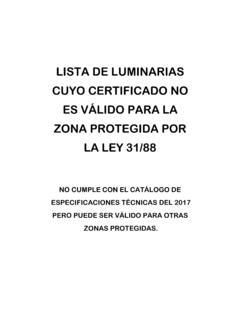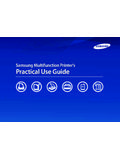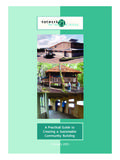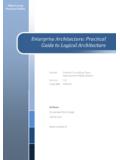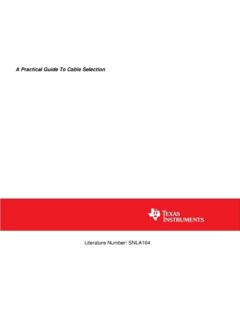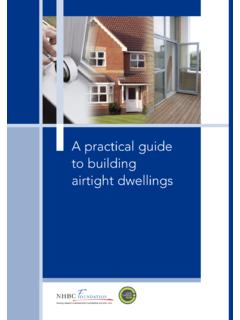Transcription of PRACTICAL GUIDE FORoutdoor lighting
1 SKY QUALITY PROTECTION TECHNICAL OFFICES OF CHILE Y CANARIASOPCC - OTPCPRACTICAL GUIDEFOR outdoorlightingEFFICIENT lighting AND CONTROL OF LIGHT POLLUTIONOPCC - OTPCIAC/OTPC - CONAMA AURA CARSO ESO/OPCCTENERIFE, SPAIN - ANTOFAGASTA, CHILE JULY 2010 PRACTICAL GUIDEFOR outdoorlightingAUTHORSCOLLABORATIONSF ederico de la Paz G mez (OTPC)Pedro Sanhueza (OPCC)Javier D az Castro (OTPC)STARLIGHTCIELOBUIO/ISTILIDACRONOLA BUNESCOIAC/OTPC - CONAMA AURA CARSO ESO/OPCCTENERIFE - ANTOFAGASTA JULIO DE 2010 PRACTICAL GUIDEFOR outdoorlightingEFFICIENT lighting AND CONTROL OF LIGHT POLLUTIONPRACTICAL GUIDEFOR outdoorlighting1. INTRODUCTION 82. OBJECTIVES 83. CRITERIA 84. TYPE OF lighting 115.
2 LUMINAIRES AND FLOODLIGHTING 136. LAMPS 137. INSTALLATION DESIGN 158. ENVIRONMENTAL IMPACT 199. IMPACT ON HUMAN HEALTH 2010. FINAL CONSIDERATIONS GUIDEFOR outdoorlightingPRACTICAL GUIDEFOR outdoorlightingLight pollution can be defined as the direct or indirect entry of artificial light into the environment. We can, however, prevent pollution from the emission of luminous flux from artificial night-time sources in intensities, directions, spectral ranges or at unnecessary times for activities planned for the areas where lighting is pollution has become a global problem that is gradually diminishing our capacity to observe the stars. It is new form of waste that gives rise to energy and environmental impacts, damage to ecosystems and the degradation of the night sky.
3 White light leads to the degradation of night-time ambience, altering the nature of urban areas and environments, with unforeseeable consequences. This GUIDE is largely aimed at professionals who are in some way involved in lighting projects, whether in design, development, start-up, management or maintenance of outdoor lighting installations. Its aim is to obtain efficient, environmentally friendly and sustainable PREVENT THE EMISSION OF DIRECT LIGHT UPWARDS AND AT ANGLES NEAR THE luminaires with reflectors and clear covers, preferably of flat glass. Avoid tilting the luminaires from their horizontal position. -Use luminaires with a percentage of upper hemisphere emission installed below 0,2% (preferably 0%) in relation to the total output flux of the luminaire, and be sure to avoid directing light near the horizon (the first 10 , 20 ), as it produces a sky glow 6 to 160 times greater than the same flux reflected off the only asymmetric beam floodlights, with asymmetries adapted to the area to be lit, not installed at a aiming (direction of maximum intensity) for floodlights with angles lower than 70.
4 (This avoids glare for users and local residents). GUIDEFOR outdoorlightingAVOID EXCESS lighting levels should comply, in the following order, with the laws, regulations, standards and recommendations in order to establish appropriate levels for lighting public and private spaces, buildings, monuments and signposts in each case. The values contained in these documents should be considered as targets to be achieved and should never exceed plus 20% of the lighting levels indicated (even if set up as minimum levels).Reduce lighting levels or switch off the installation after certain hours at night or if there is a change in the lighting requirements of the activity or reason for installation ( commercial lighting for security lighting , lower traffic intensity, illumination for buildings and monuments, illuminated signs, etc.).Do not justify excess lighting in new installations based on the simple fact that existing neighbourhood lighting was planned in excess.
5 This should be corrected before a new plan is developed. Exaggerated lighting levels should not be designed for areas of social conflict. Several studies indicate that lighting in excess and particularly glare can increase NOT USE LAMPS WITH RADIANT OUTPUT OF WAVELENGTHS SHORTER THAN 500 the chromatic performance of an installation is not the foremost objective, use the bulb/luminaire assembly that offers the most efficient lighting but with minimum emissions below 500 nm (no blue light or UV).Studies up until 2002 indicate that bulbs emitting blue and ultraviolet (mercury) radiation attract three times more insects than sodium vapour lamps. Radiations at around 460-470 nm control the circadian rhythms of living creatures and night-time emission damages and reduces the biodiversity of natural environments and causes disease in humans (effect on certain types of cancer, sleep disruption, etc.). In addition, the low emission to 500nm produces major dazzle to older people (problem with the crystalline).
6 The new neutral cool white (>3000 K) LED lamps emit at 470 nm (up to three times the maximum of the most visible zone), making them particularly harmful to health and the environment. When white light is required, warm white LEDs (<3000 K), which are now available on the market, are , light scattering in the atmosphere (glare) in clear skies (astronomical observatories) is approximately inversely proportional to the fourth power of the wavelength by which an amber coloured emission (590 nm) is three times less scattered than one at 440 nm. Therefore, radiation at wavelengths below 500 nm (blue light) must be INSTALLATIONS WITH A MAXIMUM COEFFICIENT OF coefficient of utilization (K) should be over 30% or the utilance above 40% for the road, highway, square or enclosure. Luminaires or floodlights should not by placed far from the area to be lit or, where appropriate, light projection beyond the useful zone should be minimized (K = average maintained illuminance multiplied by the surface calculation and divided by the lumens installed).
7 FOR ORNAMENTAL lighting , LUMINAIRES SHOULD PREFERABLY BE POINTED wide range of devices and optics are available for use depending on the location and size of the object to be lit, thereby avoiding excess lighting and projecting light beyond the zone in question (avoid upward-facing built-in floor lights). If necessary, visors, shields, deflectors and cowls to guarantee light control beyond the area of any case, these kinds of installations should be switched off after midnight or earlier, though luminous flux reducers are also an option, and should preferably be automatic with timer systems to guarantee MIDNIGHT (OR EARLIER):1. Switch off sports lighting , luminous signs and everything not required for public Reduce lighting to minimum recommended levels and adapted to the reduction of the activity in this schedule. DO NOT POINT SPOTLIGHTS OR LASER GUNS AT THE SKY FOR ADVERTISING, RECREATIONAL OR CULTURAL GUIDEFOR outdoorlightingFUNCTIONAL AND AMBIENT LIGHTINGF unctional lighting encompasses lighting installations for motorways, dual carriageways, urban streets and roads.
8 Ambient lighting , however, is generally placed on low supports (3-5 m) in urban areas for lighting pedestrian and commercial areas, pavements, parks and gardens, historic centres and roads with low speed OF LIGHTINGORNAMENTAL AND DECORATIVE LIGHTINGO rnamental lighting includes illumination for public buildings and monuments, as well as statues, city walls, fountains, gardens, etc., and outdoor illumination of landscapes, such as rivers, riversides, beaches, green areas, aquatic facilities and the LIGHTINGS ports lighting includes the illumination of all areas where sporting and recreational activities take place. This type of lighting is usually placed at a considerable SIGNS AND WARNING SIGNSS ignals, signs, luminous advertising, illuminated advertising and shop window, urban furniture, shelter and telephone booth lighting , etc. All traffic signs and announcements are excluded. SPECIFIC LIGHTINGIn addition to the lighting mentioned above, other types are available for concrete and specific areas or uses.
9 Below is a list of the most important: - lighting for pedestrian footpaths, stairs and ramps - Additional lighting for zebra crossings- lighting for level crossings- lighting for roundabouts and cul-de-sacs- Open air carparks- lighting for outdoor work areas- Festive and Christmas lighting - Outdoor lighting for housing12 PRACTICAL GUIDEFOR outdoorlightingDEFINITION OF LUMINAIRE AND FLOODLIGHT: These devices distribute, filter and transform light emitted by one or several lamps and contain all the necessary accessories to mount, protect and connect them to the power supply circuit, thereby fulfilling a triple function: photometric, mechanical and electrical. Photometrically speaking, these devices are responsible for controlling and distributing the light emitted by the lamp. The photometry of conventional luminaires used in functional and ambient lighting is adapted to these areas, thereby providing more effective illumination on the perpendicular axis of the luminaire.
10 Floodlight configuration, on the other hand, varies and ranges from highly concentrated photometries to those where, according to the position of the lamp, long distances are reached without tilting the floodlight (asymmetric floodlight). REQUIREMENTS FOR LUMINAIRES: 1. Choose luminaires with reflectors and clear covers, preferably of flat or lens-shaped glass, with an upper hemisphere flux of below 0,2%.2. Use optics with high-performance luminaires (>55%) whose luminous beam adapts to the surface to be lit so that it only illuminates the required area and whose design has a high coefficient of Like any other electrical equipment, a luminaire must comply with a series of safety requirements regarding electrical insulation (a IP65 is recommended for most applications), mechanical safety (IK), etc. AND FLOODLIGHTSDEFINITION OF LAMPS:Discharge lamps are generally used for outdoor lighting and can be classified according to the gas (mercury or sodium vapour) or pressure (high or low pressure) used.

